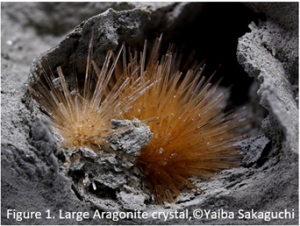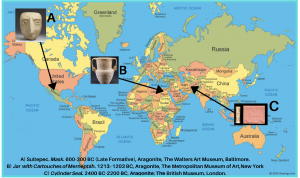Layla Huff, Winter SCIART 2021
My name is Layla Huff, and I attend Morgan State University. I am a 21-year-old graduating History major and Honors College student. After graduation, I plan to pursue a career in conservation and hopefully become a conservator myself. While I have some experience working with conservators and in conservation labs, I don’t necessarily come from a science background.
In January 2021, I participated in the Baltimore SCIART Winter 2021 program, where I gained a newfound appreciation for the more science-heavy side of preservation. Initially, I recognized that my history/conservation background might make this program extra challenging. While I did have to work harder to understand some of the new concepts, ultimately I was able to contribute in unique ways because of my previous conservation experience.
Despite the virtual setting, it truly felt that we were part of a team, checking in on each other and getting help when necessary. The program gave us the freedom to approach our tasks and projects in our way, and as a result of this freedom, I felt more confident in my scientific capabilities. Throughout the program, the other interns and I participated in virtual seminars where conservation scientists and conservators from institutions like the Metropolitan Museum of Art presented some of their notable projects. Hearing from so many professionals in the field was a tremendous opportunity, and I thoroughly enjoyed their descriptions of problem-solving as a team.
In our project, we studied aragonite, which is a polymorph of calcium carbonate found in deposits close to the Earth’s surface in various forms including stalactites, in caves, and pearls. Aragonite also appears as a component in museum material. Throughout history, this mineral has been used in pigments and paints, and some museum objects are made entirely of aragonite. Our project was titled “Utilizing Density Functional Theory to Model Small Molecule-Aragonite Interactions Relevant to Cultural Heritage” and focused on using computational chemistry to explore the relative levels of danger that common molecules pose to aragonite-containing museum material.


To gather data on the interactions between aragonite and these adsorbates, we used density functional theory (DFT). DFT does not model real-world conditions but is extremely useful when looking for broad trends in molecule interactions. Our modeling investigated a calcium-terminated aragonite surface even though this surface termination may not reflect the reality of most artifact surfaces. The simplified approach allowed us to specifically focus on which adsorbate interacted with the surface most. We quantified these interactions by calculating the adsorption energy and determining and comparing this energy for all of the adsorbates we studied. The molecules I personally studied were carbon dioxide and water. Our results suggested that sulfonic acid had the highest level of interaction with the aragonite surface and is, therefore, potentially the most dangerous for aragonite-containing material.
Working on this project allowed me to learn new skills and apply them to computational chemistry concepts. I gained a newfound appreciation for the work that conservation scientists do. I am immensely grateful for the opportunity to work on this project, and I greatly appreciate the support I received from the SCIART program as a whole.